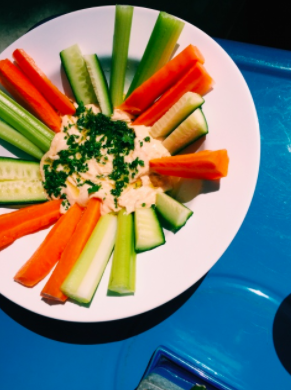Decoding Diets
November 8, 2016

All healthy lifestyles including vegan, vegetarian, and paleo focus on lots of organic (when possible).
With today’s health conscious world, it is common to find people with certain eating styles. There are varying differences between each lifestyle and it can be confusing at times sorting them all out. Some of the most common eating habits include:
Vegetarianism:
In its simplest form, vegetarianism is an eating style that eliminates all animal proteins, such as red meat, pork, poultry, seafood, and fish. As a vegetarian, most still eat eggs and dairy products. Since they no longer have any meat products, they must seek alternative sources for protein and amino acids others get from eating meat products.
Olivia Porcaro, who has been on a vegetarian lifestyle since she was seven shares, “I feel most restricted when I’m at friend’s houses, but usually I can alter stuff at restaurants to make it vegetarian.”
Instead, they normally have dairy products, tofu, and other meat replacement products referred to as textured vegetable protein, beans, nuts and legumes. There are few risks to a vegetarian diet, although iron must be monitored. The goal is to stick to mostly plant based foods to reduce the risk of disease. The most challenging part of a vegetarian diet is the lack of protein.
Veganism:
Veganism is similar to vegetarianism, but in addition to meat products they completely eliminate all food products related to animals. Those on this lifestyle void all forms of meat, eggs and dairy products. Their main source of protein comes from tofu, soy products, beans, nuts and legumes.
Veganism can be challenging to attain, however, since so much of the food we eat includes meat products. For many vegans it isn’t just about personal health, it’s about protecting animals and the environment.
Samantha Stagg, who has been on a vegan lifestyle since January shares, “I like that I’m not eating any animals or contributing to the profits of meat/dairy industries.”
Paleo:
This diet was inspired by the paleolithic period (the Stone Age), and back then spaghetti, peanut butter, and boxes of cereal were not pantry staples. Many nutritionists believe the body best functions when people eat the types of foods our prehistoric ancestors ate.
This lifestyle is centered on foods including fish, naturally-raised beef, and vegetables, but eliminates other foods that would not have been available in paleolithic times. These include grains, potatoes, dairy products, legumes, processed salt, processed oils and refined sugar.
The goal is to eat like a caveman to prevent diseases such as Type 2 diabetes, and heart disease. The only downfall to the paleo eating style, is since it relies heavily on meat it can be expensive, and the restrictions can make it difficult to follow.
Although sometimes challenging telling the differences between lifestyles, all are healthy for different reasons.
